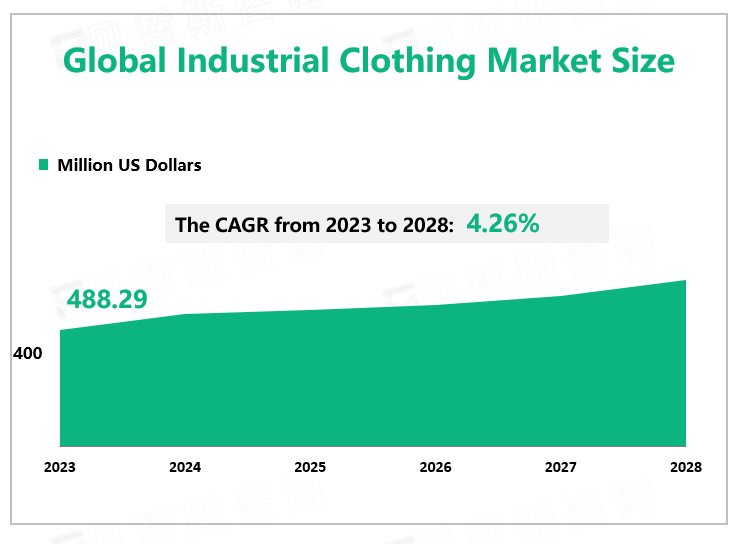Global Industrial Clothing Market Overview
According to Global Market Monitor, the global industrial clothing market size will reach $488.29 million in 2023 with a CAGR of 4.26% from 2023 to 2028.
Industrial clothing is designed to minimize exposure to hazards that cause serious workplace injuries and illnesses that may result from contact with chemical, radiological, physical, electrical, mechanical, or other workplace hazards. It is an essential element of the overall worker safety control strategy and is primarily used in several end-use industries such as automotive, chemical, mining, oil & gas, and healthcare industries.
Policies and Regulations Have Promoted the Growth of Demand for Industrial Clothing.
Strict labor laws in North America and Europe have been compelling industrial manufacturers to strictly follow norms and guidelines set by government organizations to avoid any form of occupational hazard. Increasing stringent government regulations in the Middle East and the Asia Pacific have made it mandatory for manufacturers to take precautions for worker safety to restrict workplace mishaps. The Work Safety Law of the People's Republic of China stipulates that employees in production units have the right to obtain work safety protection by the law.

Market SWOT Analysis
Today, many industrial clothing companies are focusing on raw materials that offer lightweight, higher heat resistance, comfort, and abrasion resistance, among other material characteristics, aiming at achieving versatility in protective clothing and increasing its range of applications. However, one of the challenging factors can be the fluctuating costs of key materials such as aramid fibers, carbon fibers, and silicates. When there is a significant increase in raw materials, the impact on business operations and profitability can be significant.
In some countries or regions, such as Japan, companies and public customers prefer Japanese suppliers. Therefore, a unique sales proposition as well as the willingness and patience to build lasting relationships with customers is essential. Industrial clothing manufacturers have a keen eye for the products of international competitors. Construction and manufacturing markets may shrink due to cost-cutting measures and shrinking labor and factories are being moved overseas. This will probably lead to a contraction in the demand for industrial clothing in this market.
|
S |
|
|
W |
|
|
O |
|
|
T |
|
We provide more professional and intelligent market reports to complement your business decisions.